Matara: Weaving history,miracles and lace
Matara, a town in the deep south of Sri Lanka, ornamented by a shimmering coastline, lies about 158 kilometres from Colombo. In
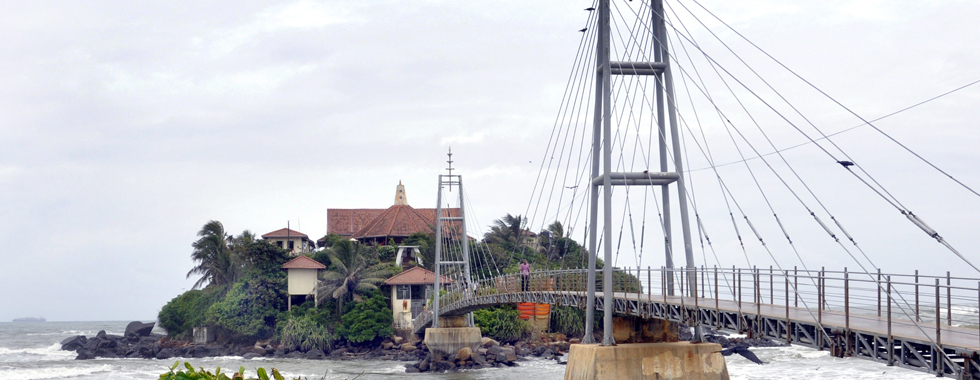
Head to Pigeon Island for a panoramic view of the sea. Pix by Susantha Liyanawatte
terms of a travel destination, the venue provides a great insight into Sri Lanka’s colonial era, with many majestic structures taking one back to the Portuguese, Dutch and even British ruling eras, in addition to ample opportunities to savor its contemporary flavours.
Today the Sunday Times travel series will focus on a few areas that are within the reach of a traveller who takes time to explore Matara, within a day.
An iconic landmark that welcomes you, as you enter the town, is the Fort built by the Dutch in 1645 in a plot of land connecting the Nilwala river mouth, bay and the sea, and unlikely to escape anyone’s attention. Although what is left today, the ramparts (made of limestone and granite) and the gateway, inside the Fort are structures reflecting the old colonial grandeur- some of which have now
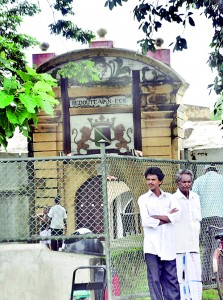
The facade of the old fort
been converted to many government institutions and offices, while maintaining the architectural façade. During the Dutch period, the Governor’s bungalow, cinnamon, arecanut and dynamite warehouses were found within the Fort. The court complex, police station and guest house found inside the Fort today are structures put up by the British in 1796.
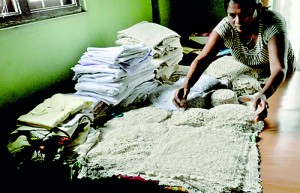
A must see: The Beeralu industry at Weligama
Considered one of the oldest buildings within the Fort, the Dutch Reformed Church with its many architectural features still intact, was built in 1706 and refurbished in 1967, as engraved in the tablet at the entrance to the Church. Massive wooden arch doors and window panes, open verandah reflecting Dutch period town architecture, the pulpit and a piano close to the altar and tombstones reflect the colonial touch within the premises. It is believed that, during the initial period, the Church was primarily for the Dutch folk but the first Sinhala sermon was held when a Church service was organised for the housemaids of the Dutch community that brought them to the Church and kept them on the verandah until the service was over. It is also believed that it was the tradition for the newly appointed Governor to engage in a swearing in at the Church before he assumed duties. The wooden semi circular shaped rail behind which the Governor took oaths, is still found in the Church premises.
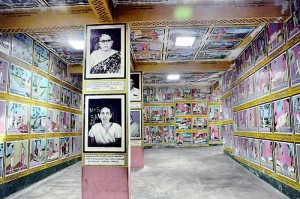
The tunnel shrine in Weherahena
Opposite the Matara hospital is the Star Fort, built in the shape of a unique six-point star. Between the outermost wall and the rampart, is a moat where crocodiles were kept as a protective measure. Construction work of the Star Fort had been initiated by Governor Jan baron van Eck in 1763 and completed in 1765. The work was handed over to a muhandiram. Currently, the Star Fort houses a regional archeology museum after it was taken over by the Archeology Department in 1980.
Proceed towards Beach Road, and you will find the Shrine of Our Lady of Matara, a Roman Catholic Church built in 1907 that tells us the famous story of the miraculous statue of Our Lady. The annual church feast that falls on the second week of September, is the single largest religious occasion in Matara that brings
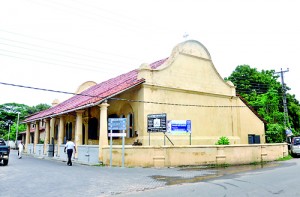
Dutch Reformed Church: One of the oldest buildings within the church
people from different parts of the country (around 200,000) together, says Rev. Fr. Damian Arsakularatne of the shrine. Elaborating on the historical significance, Fr. Damian says this early 17th Century Portuguese type statue of Our Lady, cut on a solid piece of ash wood, had been washed away into the sea three times and each time it miraculously retuned to Matara.
Originally, it was detected by a group of fisherman from Weligama inside a wooden crate and it was then handed over to the original church at Matara which no longer exists. During an outbreak of a major Cholera epidemic in the area that claimed many lives, the people from the area had got together and prayed and the statue was taken on a procession in Matara. This miraculously brought the epidemic to an end. The statue got lost yet again in the early 1990s when it was sent to Europe for restoration, but after surviving a dramatic ordeal the statue miraculously got back to Matara on a vessel. The third time it was lost and found again was during the December 2004 Tsunami.
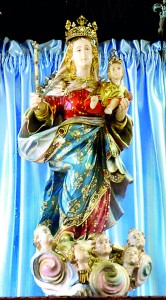
The miraculous statue of Our Lady
Pigeon Island in Matara, in close proximity to the main bus stand is a picturesque location worth visiting. This island, which houses a temple built about 10 years back wherein Buddhists monks of the Rohana chapter are ordained, could be accessed by a hanging bridge where visitors are seen pausing a while to get a glimpse of the breathtaking view of the sea and pose for a few photographs. A climb to the peak of the island, will also give one a panoramic view. The island is named after a particular variety of stone found in the location, the Sunday Times was informed by a monk who resides at the temple, although people have a wrong notion that it is because of the presence of pigeons, .
For those of you who enjoy ancient temple murals, the tunnel shrine in Weherahena is a must see. This tunnel shrine built in six layers behind a colossal 88 cubit long Buddha statue, is a master piece. A 115- year old, 600-metre long, man-made tunnel, has been built excavating a mound of earth. The tunnel consists of 23,000 paintings depicting the famous 550 jathakaya. The tunnel was built by Ven.  Paravahera Revatha Thera, the founder priest of Weherahena temple, who having arrived at the thick jungle of the Weherehena area during early 20th Century, executed the innovative idea to build this massive Buddha statue and the tunnel. The natural stones found while excavating the tunnel, have been preserved by putting up statues and murals on them.
Paravahera Revatha Thera, the founder priest of Weherahena temple, who having arrived at the thick jungle of the Weherehena area during early 20th Century, executed the innovative idea to build this massive Buddha statue and the tunnel. The natural stones found while excavating the tunnel, have been preserved by putting up statues and murals on them.
Further interior from Matara towards Thelijjawila, on Akuressa Road is an indigenous medical practitioner who treats snake bites, runs a reptile conservation centre. A visit to the residence of this 74-year old Veda Mahaththya, D.G Wijeypala will give you an unusual experience of seeing about 15-20 varieties of reptiles endemic to Sri Lanka. The Centre is often frequented by schoolchildren, university students, medical practitioners and even foreigners, the Veda Mahaththaya says, adding that it was his father known as the Telijjawila Veda Mahaththya who was the first to have reptiles at home in Sri Lanka, back in the old days.
On your way back from Matara, a stop over at Weligama is worthwhile to catch a glimpse of the traditional art of beeralu lace.Practiced as a cottage industry by women, Weligama is known for its traditional lace weaving industry. With several wayside beeralu lace weaving centres in addition to the Beeralu Making Centre in Kapparatota, Weligama, this industry attracts locals as well as tourists who drop in, more out of curiosity than to purchase these expensive yet intricate products.


